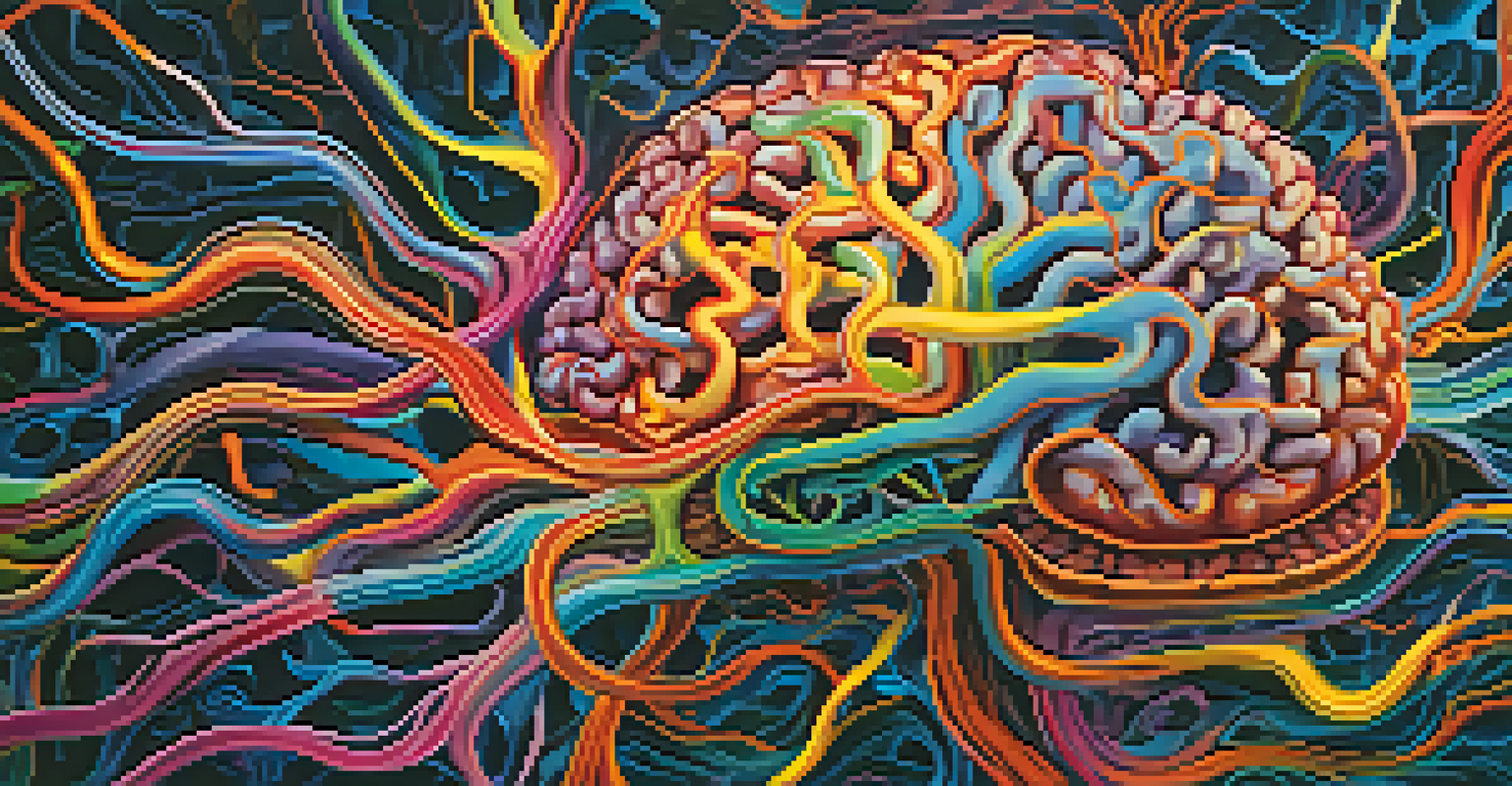Personal Narratives and the Healing Power of Entheogens

Understanding Personal Narratives in Healing
Personal narratives are the stories we tell ourselves about our lives. They shape our identities and influence our emotional wellbeing. When we reflect on these stories, especially in times of struggle, we can uncover insights that lead to healing.
The greatest discovery of my generation is that a human being can alter his life by altering his attitude.
For instance, sharing a personal narrative in a supportive environment can provide a sense of validation and connection. This process encourages individuals to confront their experiences, turning pain into a source of strength. It’s like shedding old skin to emerge renewed.
Moreover, personal narratives can help us make sense of our past, allowing us to reframe negative experiences into lessons learned. This transformative journey is vital for emotional growth and resilience, showing us that our stories are not just about suffering but also about survival and triumph.
The Role of Entheogens in Therapeutic Practices
Entheogens, often referred to as psychedelics, are substances that can induce altered states of consciousness. They have been used for centuries in various cultures for spiritual and healing purposes. Today, they are gaining attention in clinical settings for their potential therapeutic benefits.

Research shows that entheogens can foster deep introspection, allowing individuals to confront their emotions and experiences in a new light. This altered state can break down mental barriers, facilitating a more profound understanding of oneself and one's narrative.
Personal Narratives Foster Healing
Reflecting on personal narratives helps individuals uncover insights, transforming pain into strength and promoting emotional growth.
For many, the experience can be akin to peeling back layers of an onion, revealing deeper truths that may have been buried. This newfound clarity can lead to significant breakthroughs in therapy and personal growth, making entheogens a powerful tool in healing journeys.
Interconnecting Personal Narratives and Entheogens
The intersection of personal narratives and entheogens creates a unique space for healing. When individuals use these substances, they often revisit and re-examine their life stories. This process can illuminate patterns and beliefs that may have contributed to their struggles.
The mind is everything. What you think you become.
Consider someone who has faced trauma; through an entheogenic experience, they might confront their past in a safe and controlled environment. This can lead to a rewriting of their narrative, transforming feelings of victimhood into empowerment.
By merging personal storytelling with psychedelic experiences, individuals can find a path toward resolution and peace. This synergy can foster a sense of agency, helping people reclaim their narratives and forge ahead with renewed purpose.
Healing Through Shared Experiences
Group settings for entheogenic experiences often emphasize the importance of shared narratives. When individuals come together, they create a collective space that fosters understanding and empathy. Hearing others’ stories can validate personal experiences and diminish feelings of isolation.
This communal aspect is powerful, as it can help participants realize they are not alone in their struggles. Listening to diverse perspectives allows individuals to broaden their understanding of healing and resilience.
Entheogens Enhance Self-Understanding
Entheogens can induce altered states of consciousness that facilitate deep introspection, revealing buried truths and aiding personal growth.
In these shared moments, the healing power of vulnerability shines through. By sharing their narratives, participants not only heal themselves but also contribute to the larger narrative of human experience and connection.
The Science Behind Entheogenic Healing
Scientific research into entheogens has revealed their potential to alter brain chemistry. These substances can promote neuroplasticity, the brain's ability to adapt and change, which is crucial for healing. This means that through guided experiences, individuals can form new neural connections that support positive emotional states.
Additionally, studies suggest that entheogens can increase levels of serotonin, a neurotransmitter linked to mood regulation. This biochemical shift can help alleviate symptoms of depression and anxiety, contributing to a greater sense of wellbeing.
Understanding the science behind these substances enhances our appreciation for their therapeutic potential. It bridges the gap between ancient practices and modern medicine, highlighting a holistic approach to mental health that honors both mind and body.
Challenges and Considerations in Entheogenic Therapy
While the benefits of entheogens are promising, it's essential to approach them with caution. Not everyone may have a positive experience, and some might face psychological challenges during their journey. This unpredictability underscores the need for guided sessions with trained professionals.
Moreover, integrating entheogenic experiences into everyday life can be tricky. Individuals may struggle to translate their insights into actionable changes. This is where personal narratives play a crucial role, helping individuals articulate and apply their experiences.
Shared Experiences Build Connection
Group settings for entheogenic experiences create a communal space for sharing narratives, validating individual experiences and fostering empathy.
It's also important to consider the legal and ethical implications surrounding the use of entheogens. As research continues to evolve, ongoing dialogue about safety, accessibility, and integration is essential for responsible usage.
Looking Ahead: The Future of Healing Narratives and Entheogens
As societal attitudes toward mental health and psychedelics continue to shift, we may see a growing acceptance of entheogens in therapeutic contexts. This evolution could lead to innovative approaches that integrate personal narratives with these powerful substances, creating a more personalized healing journey.
Imagine a future where therapy sessions include guided entheogenic experiences, complemented by narrative therapy techniques. This holistic approach could empower individuals to not only heal but also flourish in their lives.

Ultimately, the connection between personal narratives and entheogens represents a profound opportunity for healing. By embracing our stories and exploring the depths of our consciousness, we may unlock new pathways to understanding ourselves and our place in the world.